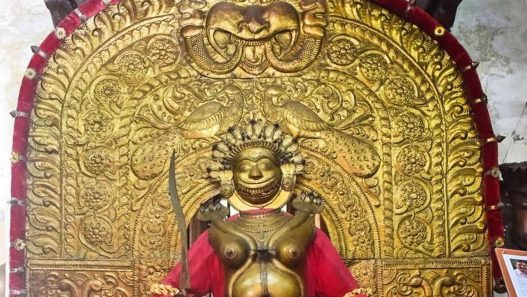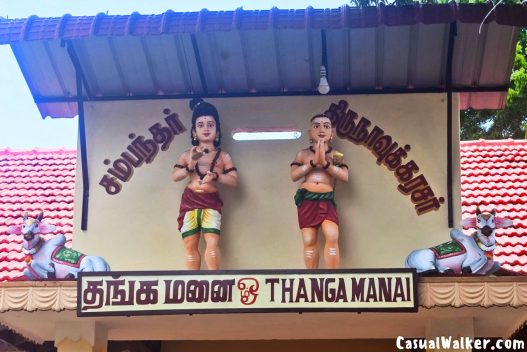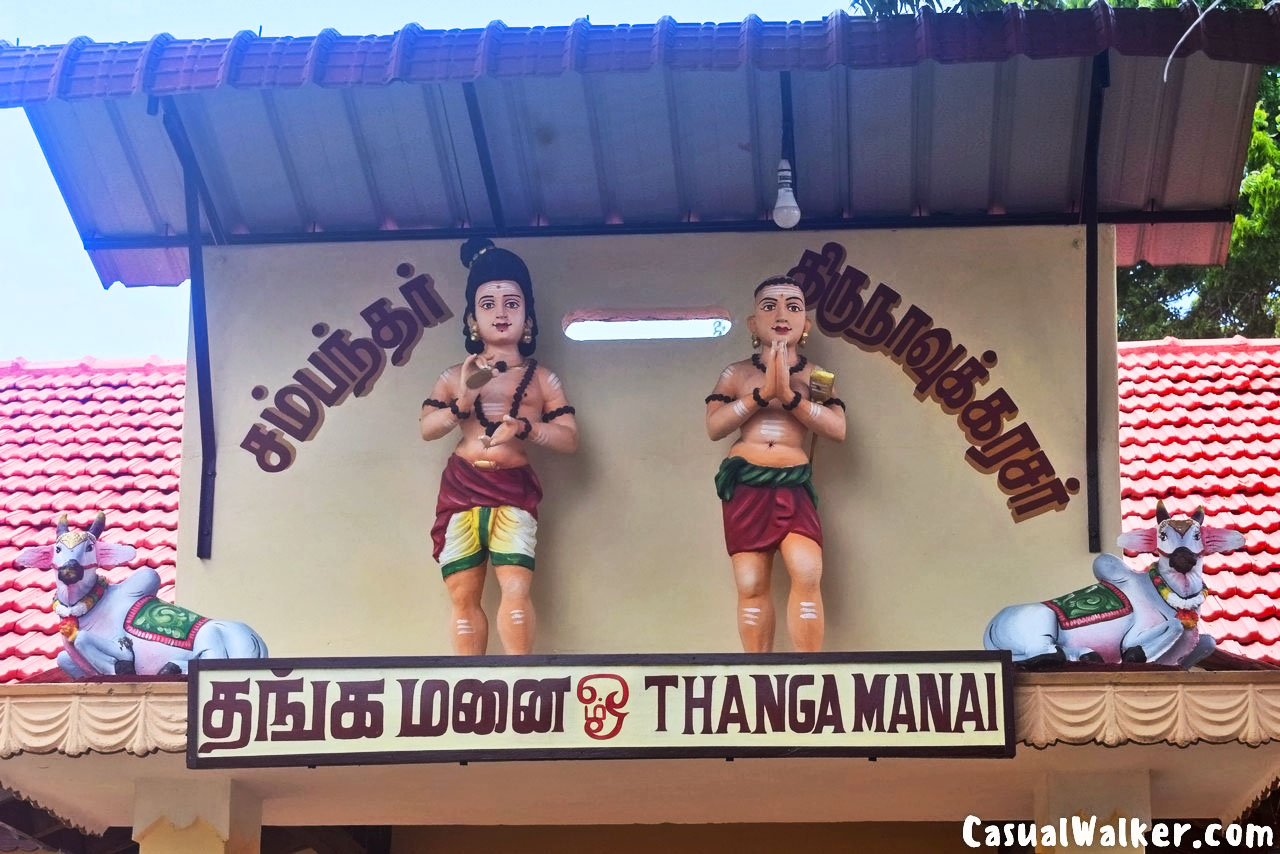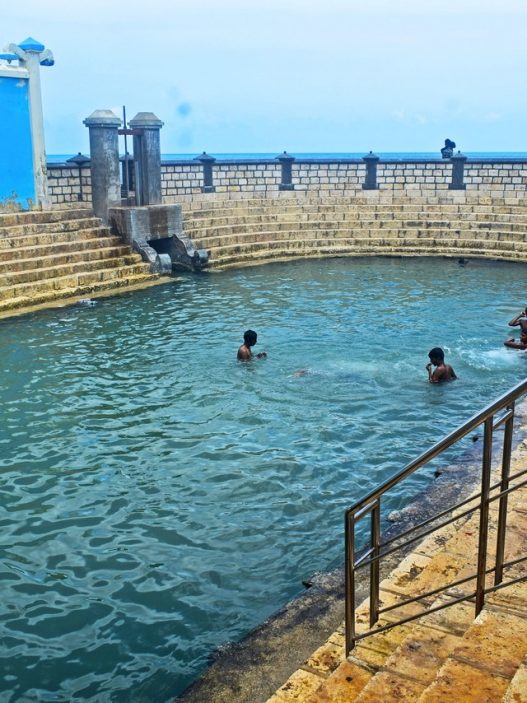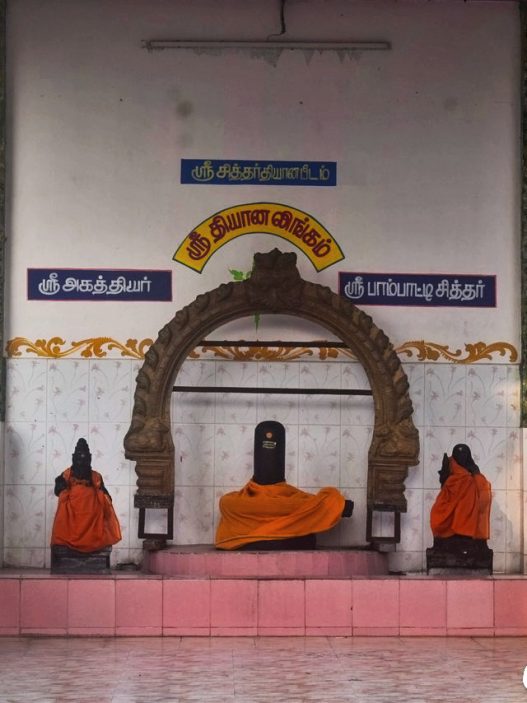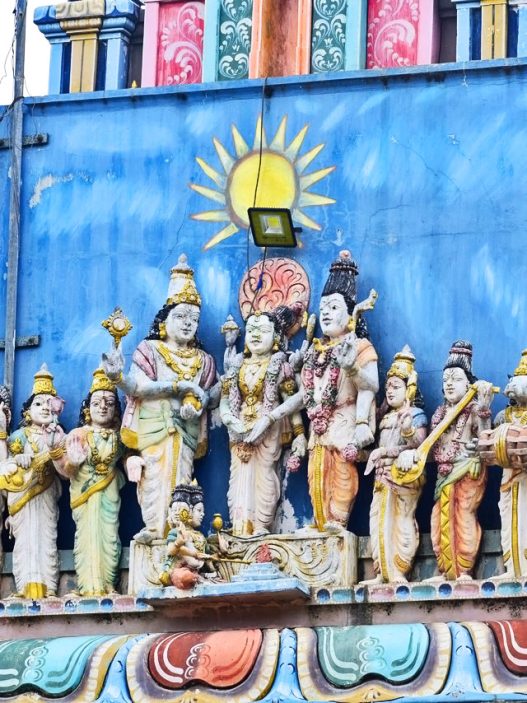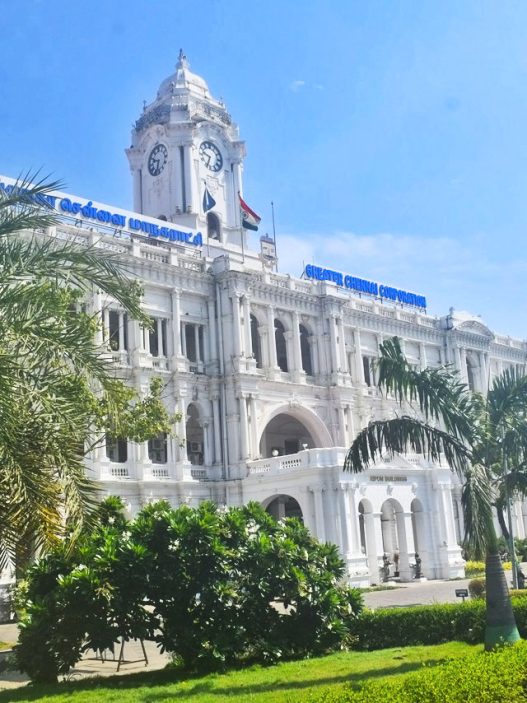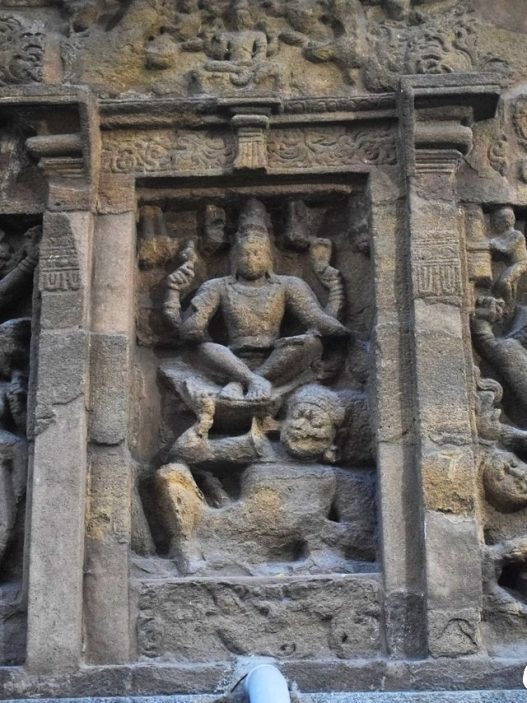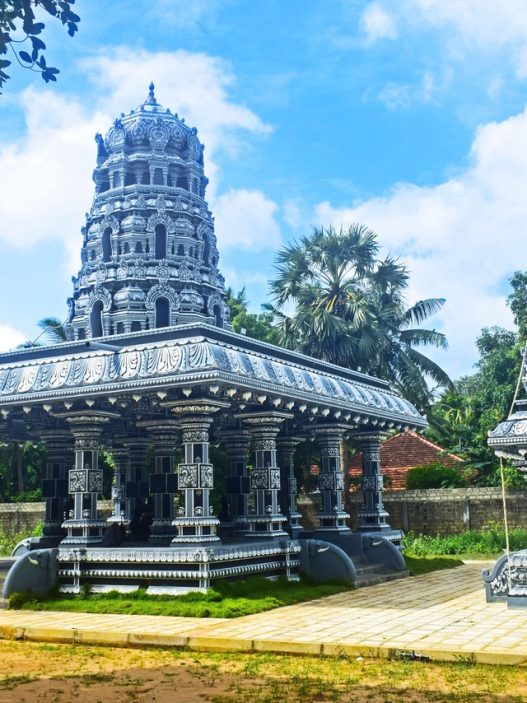Yogar Swami Maha-samadhi Temple in Columbuthurai, Jaffna | Journey to the Sri Lanka’s Most Revered Hindu Sage & Yogi, Yogaswami’s Ashram & Shrine – Complete Visitor Guide, History, Teachings, His Four Disciples, Visit Timings, Contact Number
– temple & ashram to the sage of jaffna
At the Yogaswami samadhi Temple in Columbuthurai, Jaffna / Yalppanam — a city renowned for the magnificent Nallur Kandaswamy Temple, my heart was already stirring with anticipation, for I was journeying to one of the most sacred places in Sri Lanka: the Mahasamadhi Temple of the great Paramaguru Sage Yogaswami. But this was more than just a temple visit; it was a pilgrimage to understand the extraordinary life of a soul who transformed from a simple storekeeper named Sadasivan into one of the most revered Hindu spiritual masters of our time.
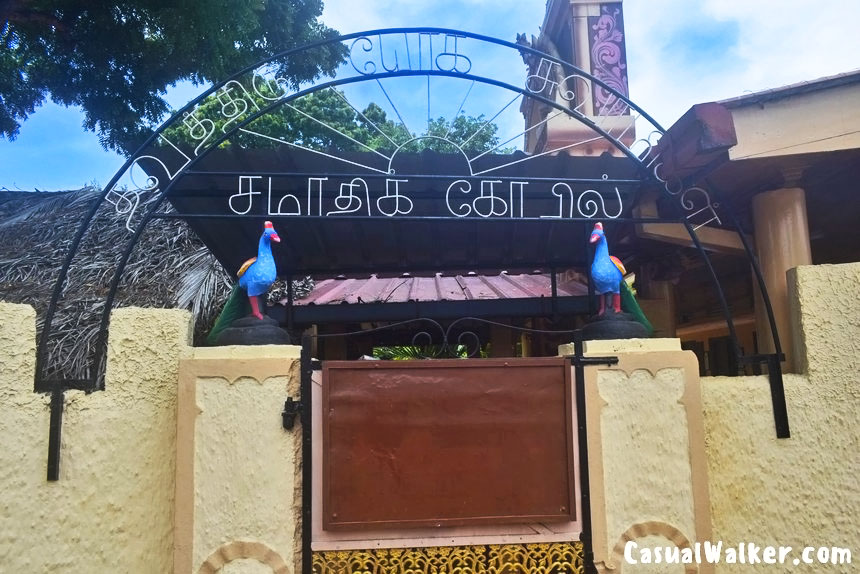
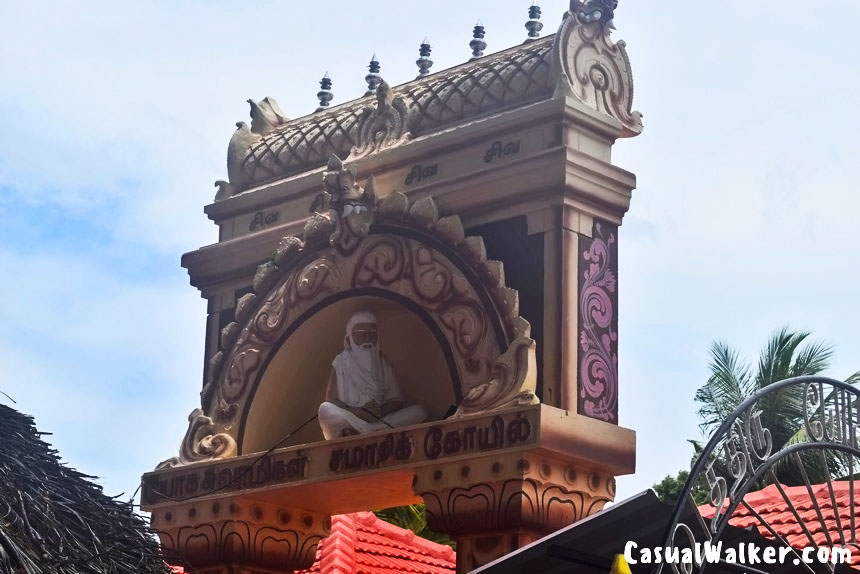
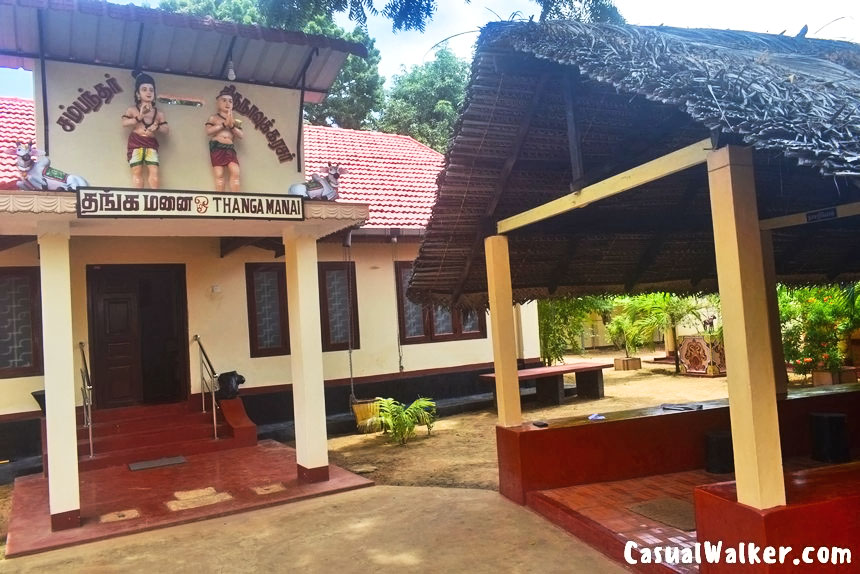
History of Paramaguru Sage Yogaswami – Making of a Saint: From Sadasivan to Yogaswami
Paramaguru Sage Yogaswami was born in 1872 near the famous Kandaswamy temple, little Sadasivan faced the profound loss of his mother before his tenth birthday. Raised by loving relatives, something within this young soul yearned for the Divine from an early age.

Even as a teenager, Sadasivan made choices that revealed his spiritual calling. When his father offered him a place in the family business, he declined – not out of laziness, but because worldly pursuits would interfere with his meditation and scriptural studies. At a tender age, he took the sacred vow of celibacy, dedicating his entire being to the pursuit of Truth.
Spark That Ignited the Flame
In 1889, when Sadasivan was just eighteen, destiny arranged a divine encounter that would echo through his entire life. The great Swami Vivekananda visited Jaffna, and as the festive procession carried him along Colombuthurai Road, something miraculous happened. As they approached the very olive tree where our young seeker would later perform his intense tapas, Vivekananda suddenly stopped the procession.
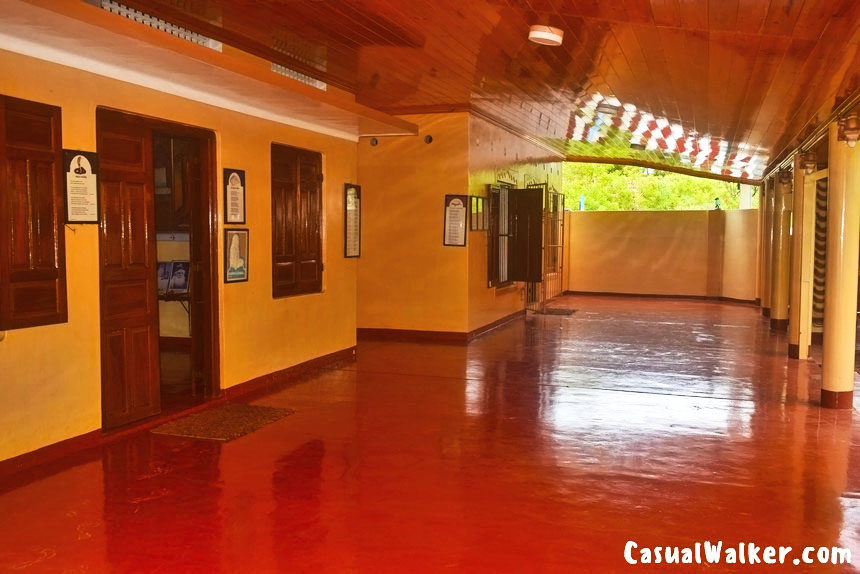
“This is sacred ground,” he declared, stepping down from his carriage to walk past on foot. He called the area around that tree “an oasis in the desert.” How prophetic those words would prove to be! The next day, when Vivekananda addressed the public gathering, he began with words that penetrated Sadasivan’s very soul: “The time is short but the subject is vast.”
These words became a mantra for the future Yogaswami, echoing through his consciousness for the rest of his life. How often I heard him repeat this phrase to devotees in his later years, reminding us all of the urgency of spiritual realization!
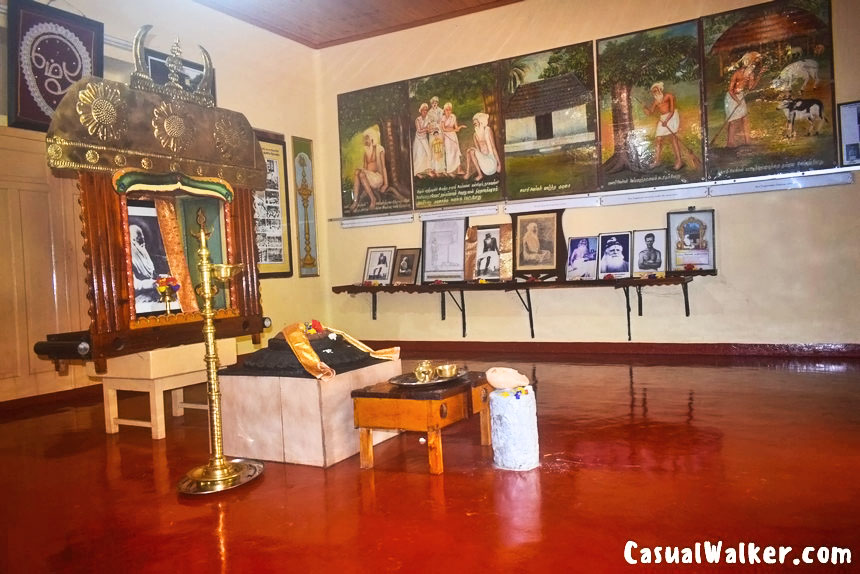
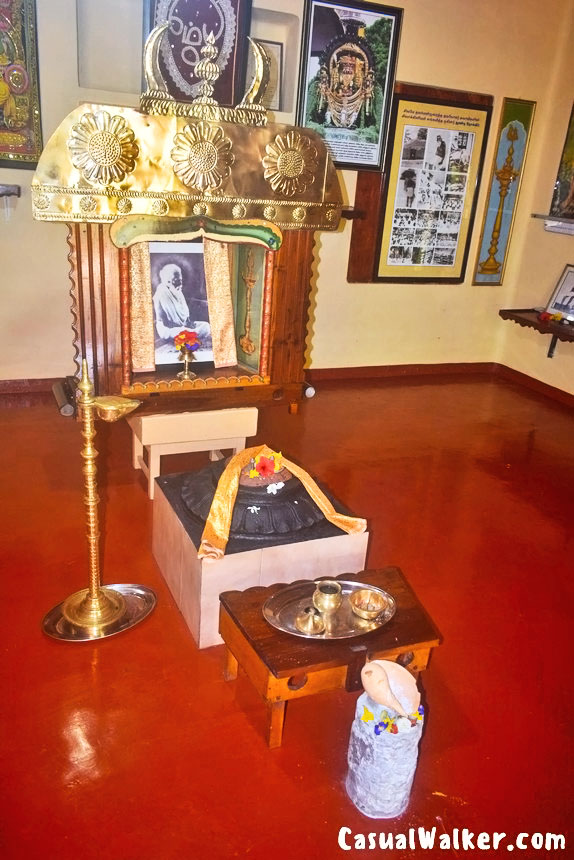
Around 1890, young Sadasivan found work as a storekeeper for an irrigation project in Kilinochchi. But even in this mundane job, his yogic nature shone through. Colleagues were amazed to find him meditating throughout entire nights, demanding of himself the same utter simplicity and purity he would later expect from his disciples.
Life-Changing Encounter
The year 1905 marked the turning point that would transform Sadasivan forever. As he walked along the road near Nallur Temple, a voice thundered out: “Hey! Who are you? There is not one wrong thing! It is as it is! Who knows?”
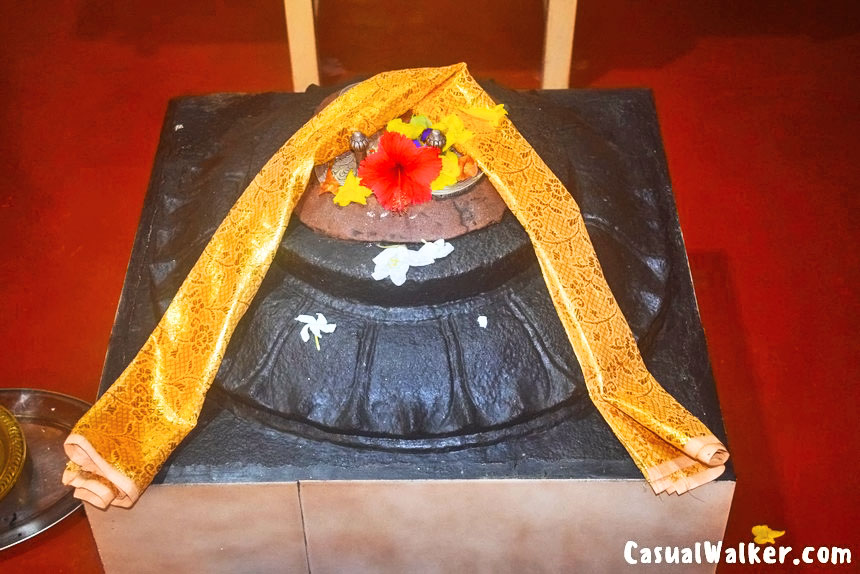
The speaker was Sage Guru Chellappa Swamy, and in that instant, everything vanished for young Sadasivan in what he later described as “a sea of light.” This was his first glimpse of the guru who would reshape his entire existence.
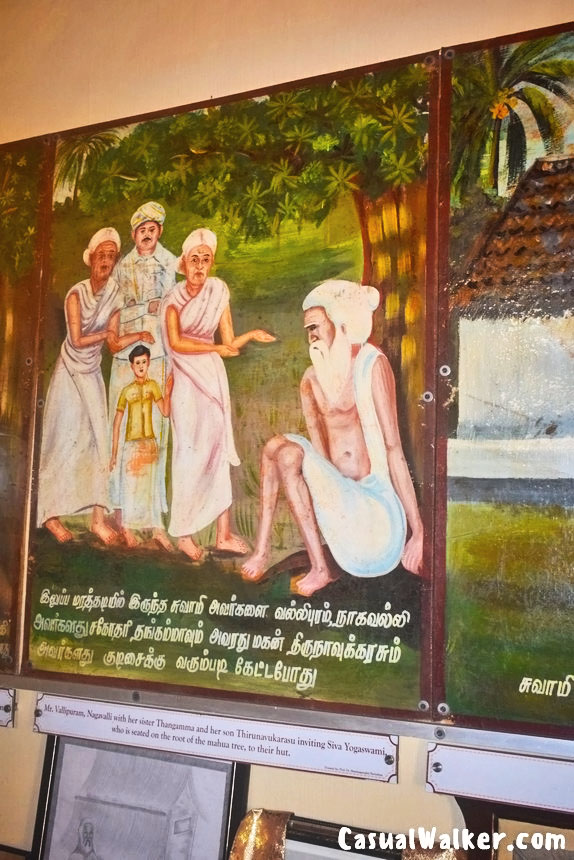
When they met again in a festival crowd, Chellappaswami’s command was simple yet profound: “Go within; meditate; stay here until I return.” For three days and nights, Sadasivan waited in meditation. When his master returned to find him exactly where he had been left, the real training began.
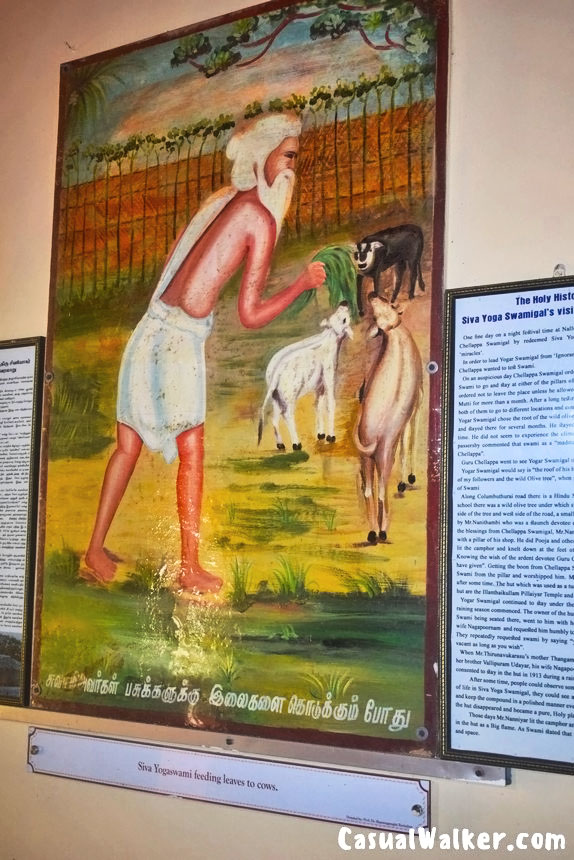
Sadasivan gave up everything – his job, his possessions, his old identity – to follow Chellappaswami for the next five years. These were years of such intense spiritual discipline and severe austerity that they forged the steel of his character. After receiving sannyas diksha (monastic initiation), his guru sent him away with the instruction never to return. When Chellappaswami attained mahasamadhi in 1911, Sadasivan had been transformed into Yogaswami.
Years of Tapas: Becoming One with the Divine
When I reached the enterence of this divine place, I felt an immediate shift in the very atmosphere. Something sacred dwelt here – I could sense it even before stepping through the gates. The sandy courtyard welcomed me with its simplicity, and there before me stood two modest concrete structures that held within them the living memory of a great soul.

This was the very place where, from 1911 to 1961, Yogaswami had performed his legendary tapas under the ancient olive tree. For fifty years, this became his spiritual space, the sacred ground where a human soul merged completely with the Divine.
When I walked towards the temple’s room on the right, where Gurudev lived most of his life. I closed my eyes and tried to imagine those early years when this was just a simple hut in a garden, and Yogaswami would spend three days and nights in continuous meditation, completely motionless, taking no shelter from sun, rain, or wind. On the fourth day, he would walk vast distances before returning to repeat the cycle.
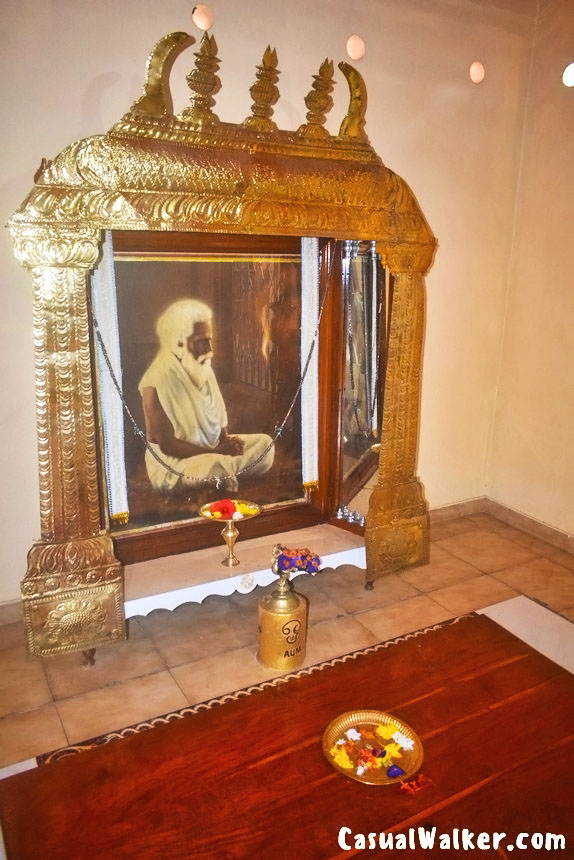
Gradual Opening of a Closed Lotus
Initially, following his guru’s example, Yogaswami drove away anyone who tried to approach him. But divine love cannot remain hidden forever. Gradually, he began allowing sincere seekers to come near.
As more devotees gathered, his austere demeanor softened. Eventually, he was persuaded to occupy the small hut that would become his base for the rest of his life. Even then, he initially forbade devotees from revering or caring for him, insisting that the whole of human life should be made into spiritual practice – he would not admit any division between holy and worldly activities.
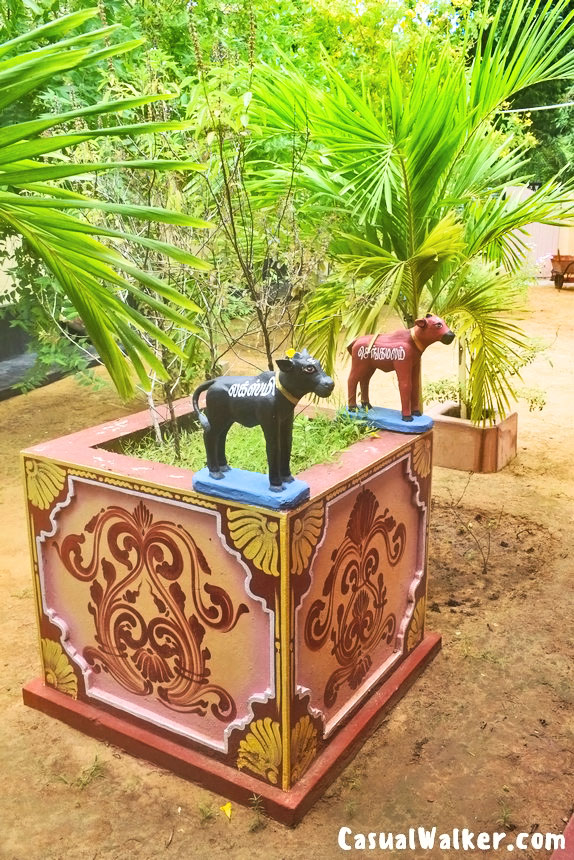
“Summa Iru” – The Wisdom of Simply Being
Stepping into his main residence, I was immediately struck by the profound stillness that seemed to emanate from the very walls themselves. A small shrine glowed softly in the corner, an eternal flame keeping vigil for this beloved guru. The rest of the space was beautifully sparse – only a large painting of Yogaswami in deep meditation adorned the room. The meditation hall above beckons with its expansive tranquility, lovingly maintained in spotless devotion, where the sweet perfume of ceremonial incense mingles with the silence to create a gateway to the Divine.
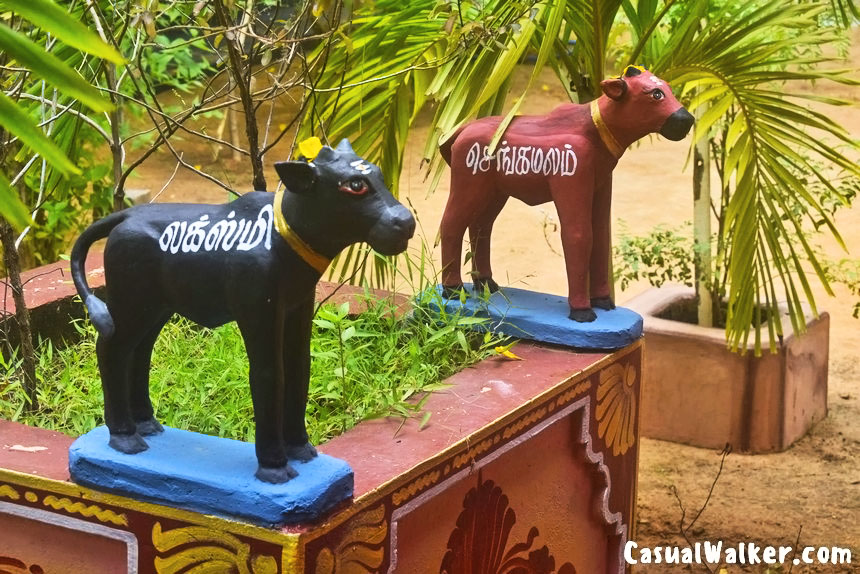
I settled into lotus posture on the cool floor and closed my eyes. Within moments, I understood why thousands had sought this place over the decades. The silence here was not merely the absence of sound – it was with the lingering vibrations of a soul who had merged completely with the Divine.
In that sacred stillness, I remembered his most famous teaching: “Summa Iru!” These Tamil words carry a meaning that no English translation can fully capture. “Summa” speaks to a state of pure being, beyond doing, beyond thinking, beyond the endless chatter of the mind. “Iru” simply means “to be.” Together, they point to that most profound spiritual practice – the art of simply existing in pure awareness.
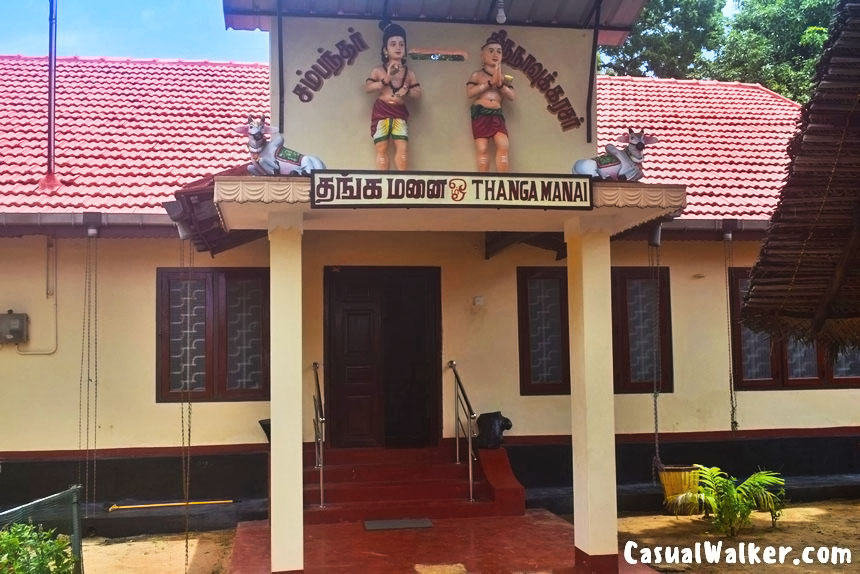
Four Pillars of Truth
As I meditated in his sacred space, the four great sayings that encapsulated his entire teaching echoed in my consciousness:
- “Oru Pollapum Illai” – “There is not even one wrong thing”
- “Muzhuthum Unmai” – “All is truth”
- “Eppavo mudintha kaariyam” – “It was all accomplished long ago”
- “Naam Ariyom” – “We do not know”
These weren’t mere philosophical statements but living realizations born from decades of intense spiritual practice. How perfectly they captured the essence of his teaching – that ultimate reality is already perfect, already complete, and our very seeking is what veils it from us!
Flowering of Wisdom: Natchintanai and Sivathondan
In 1935, recognizing the need to preserve and share his teachings, Yogaswami established the monthly journal “Sivathondan” – which means “servant of Siva” and “service to Siva.” This became the primary vehicle for his profound teachings to reach seekers around the world.
Yogaswami urged his students to walk the Sadhana Marga—the “Path of Spiritual Practice.” Unlike theoretical and intellectual learning, the Sadhana Marga demands great effort, unwavering spiritual discipline, and consistent inner transformation. This was Yogaswami’s essential prescription for all truth seekers. His wisdom flowed spontaneously in over 3,000 poems and songs called “Natchintanai” – literally means good thoughts — sacred verses that continue to guide devotees on their spiritual journey.
A Journey to the Source: India Pilgrimage
In 1940, at age 68, Yogaswami undertook a pilgrimage to India, visiting the sacred cities of Banaras – the Kashi / Varanasi and Chidambaram. His letter from Banaras revealed the depth of his realization: “After wanderings far in an earnest quest, I came to Kashi and saw the Lord of the Universe – within myself. The herb that you seek is under your feet.”
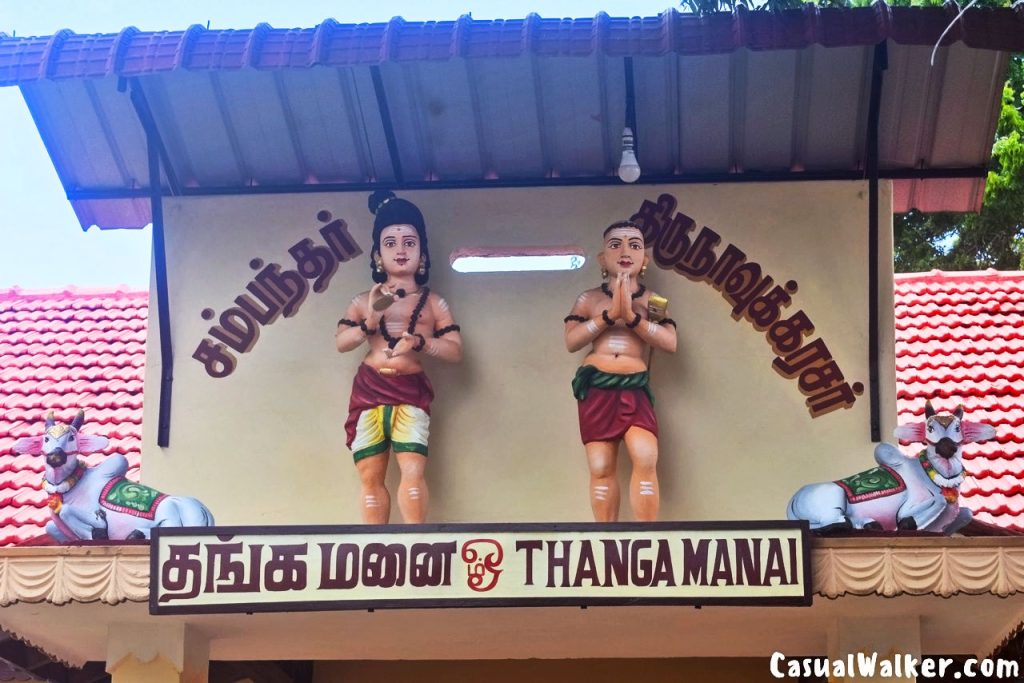
But perhaps the most extraordinary moment of this journey was his meeting with Sri Ramana Maharshi at Arunachalam Ashram in Tiruvannamalai. Two great realized souls simply sat facing each other all afternoon in eloquent silence. Not a single word was spoken, yet everything was communicated. When devotees later asked what transpired, Yogaswami’s response was perfect: “We said all that had to be said.”
Four Pillars: Disciples Who Carried the Light
As I reflected on Yogaswami’s legacy, I marveled at how he had trained four extraordinary noble disciples to carry his teachings forward:
Markandu Swamy
Markandu Swamy, born into a humble family in Jaffna, served as a dedicated government survey officer in the Department of Survey of Sri Lanka, bringing the same precision and attention to detail that characterized his professional life into his spiritual practice. His disciplined nature and unwavering devotion caught the attention of Yogaswami, who recognized in him the rare qualities of a true disciple. After years of sincere sadhana while maintaining his government position, Markandu Swamy eventually retired from worldly duties to dedicate himself entirely to the spiritual path, taking residence at the serene Kaithady Ashram where he could immerse himself completely in meditation and service. His life demonstrated that one could achieve the highest spiritual realizations while fulfilling worldly responsibilities, perfectly exemplifying Yogaswami’s teaching that the entire span of human life should be transformed into spiritual practice.

Satguru Sivaya Subramuniyaswami
Satguru Sivaya Subramuniyaswami, born Robert Hansen in Oakland, California on January 5, 1927, was a remarkable young American seeker who found his way to this remote corner of Sri Lanka in search of ultimate truth. Born into an American family, he experienced profound spiritual stirrings from childhood—at age six, he reported feeling “the totality of the power of the eternity of the moment” growing stronger within him. Deeply inspired by the life of Swami Vivekananda, he traveled to India and Sri Lanka in 1947, where destiny led him to Yogaswami’s humble dwelling. Yogaswami initiated him and giving him the spiritual name Subramuniya and ordaining him into the ancient lineage as a sannyasin, making him the 162nd Jagadacharya of the ancient Nandinatha Sampradaya’s Kailasa Parampara.
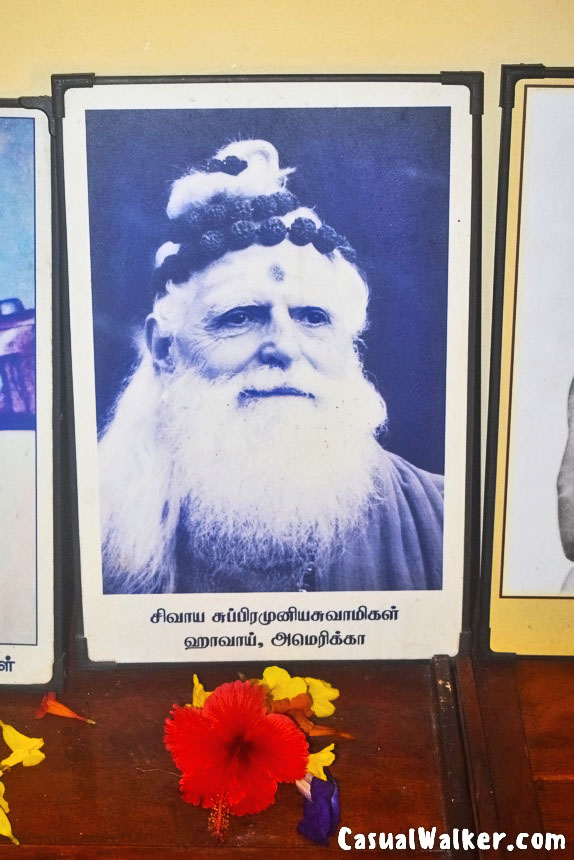
Returning to America with his guru’s divine mission, Subramuniya first established the very first Hindu temple in the United States in San Francisco, founding the Saiva Siddhanta Church in 1949. His greatest achievement came in 1970 when he established Kauai Aadheenam (Kauai’s Hindu Monastery) on Hawaii’s Garden Island—a magnificent 382-acre temple-monastery complex situated on a riverbank near the foot of an extinct volcano, becoming “the first major Hindu monastery in the Western world”. Through the Himalayan Academy, he published numerous books, established temples across multiple continents, and trained a generation of Western Hindu monastics, ensuring Yogaswami’s teachings would flourish far beyond the shores of Sri Lanka across North America, Australia, New Zealand, and Europe.
Chellathurai Swamy
Chellathurai Swamy exemplified the profound transformation that occurs when an educator encounters true spiritual wisdom, transitioning from shaping young minds in the classroom to nurturing souls on the divine path. As a respected school principal, he had already demonstrated his natural gift for guidance and leadership, qualities that would prove invaluable in his later spiritual mission. When he encountered Yogaswami’s teachings, the same dedication and systematic approach he had brought to education became the foundation of his spiritual practice. After attaining the highest wisdom under his guru’s guidance, Chellathurai Swamy recognized that the precious teachings of Yogaswami needed proper institutional support to flourish and reach future generations. He devoted the remainder of his life to establishing and nurturing the two primary Sivathondan Nilayams (Sivathondan Centers) – one in Jaffna and another in Batticaloa – ensuring these sacred spaces would serve as beacons of authentic spiritual guidance for devotees across the island. His meticulous attention to preserving the purity of the teachings, combined with his natural ability to organize and inspire others, made him the perfect architect for these spiritual institutions. Through his tireless efforts, countless seekers would have access to genuine spiritual guidance, making Chellathurai Swamy not just a disciple who achieved personal realization, but a spiritual pioneer who built the infrastructure for dharma to flourish in Sri Lanka for generations to come.
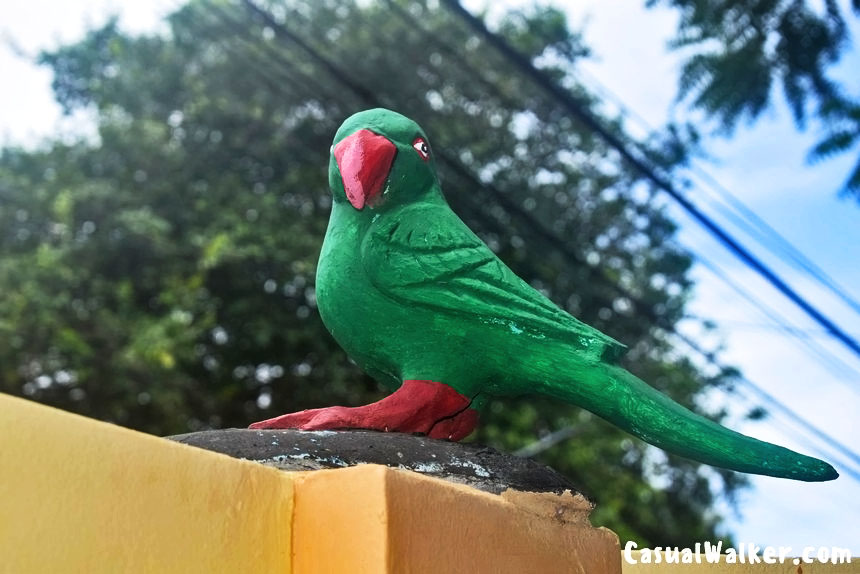
Santhaswamy
Santhaswamy’s spiritual journey represents one of the most remarkable transformations in the annals of Eastern-Western spiritual exchange – from the privileged corridors of British colonial power to the dusty floor of a simple hut in Jaffna. Born James Ramsbotham, son of Lord Viscount Soulbury who served as the last Governor-General of Ceylon during the twilight of the British Empire, he possessed every advantage that Western civilization could offer – aristocratic lineage, prestigious education, and a master’s degree in philosophy from one of Britain’s finest universities. Yet despite his intellectual achievements and social position, a deep spiritual hunger gnawed at his soul, leading him on an earnest quest for truth that took him through the salons of European mysticism and into the teachings of the renowned philosopher P.D. Ouspensky, whose Fourth Way teachings had captivated many Western seekers. However, all the sophisticated philosophical systems and esoteric knowledge of the West could not satisfy the profound longing in his heart. It was only when destiny led him to the humble dwelling of Yogaswami – a simple Tamil saint sitting in a modest hut, worlds away from the grand mansions and official residences of his privileged upbringing – that James finally found what he had been seeking. In surrendering his Western identity to become Santhaswamy, he demonstrated that true spiritual realization transcends all boundaries of race, culture, and social status, proving that the Divine calls souls from every corner of the earth to find their home in the eternal truth that knows no nationality or class distinction.
The Final Years: Grace in Frailty
The concrete structure on the left held an even more profound significance. Here, in his final years after a hip injury confined him, the great guru spent his last days in physical form. In 1961, at age 89, while feeding his beloved cow Valli, he broke his hip. Months in the hospital and confinement to a wheelchair could not diminish his spiritual radiance – he continued dispensing wisdom and guidance to all who sought him.
It was within these very walls that at 3:30 AM on a Wednesday in March 1964, he consciously chose to leave his body, attaining Maha Samadhi. When the radio announced his Great Departure, the entire nation of Sri Lanka paused in reverence, and devotees thronged to Jaffna to bid farewell to their beloved guru.
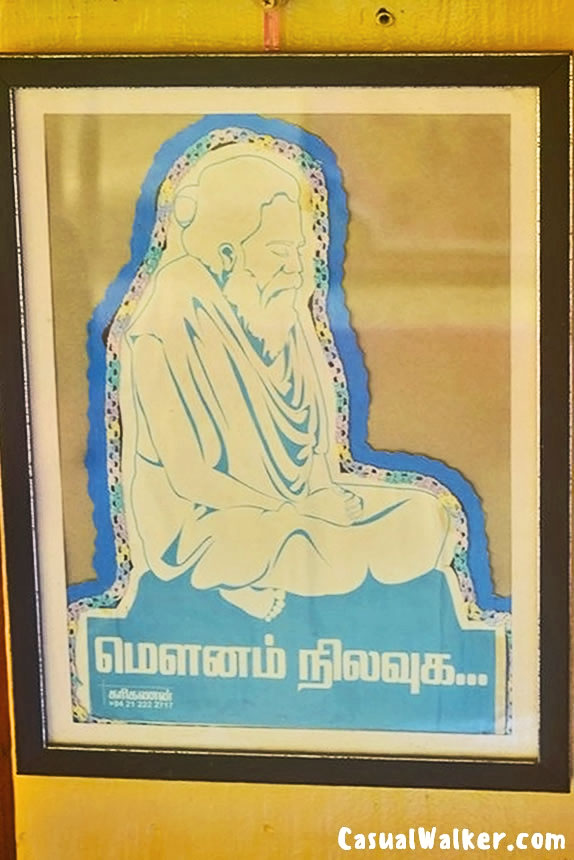
A Sanctuary Preserved by Love
What struck me most profoundly during my visit was the immaculate care with which this sacred space has been maintained. Despite the civil war that devastated this region, the loving devotees of the Sivathondan Society have preserved this temple with remarkable dedication. Even today, the faithful gather twice daily for prayers – at 6:30 AM and 4:00 PM – keeping alive the spiritual rhythms that Gurudev himself observed.
Regular meditation sessions, yoga classes, and spiritual discourses continue the guru’s mission of sharing divine wisdom with all who hunger for it.
The Eternal Message: “Know Thy Self by Thyself”
As I prepared to leave this sacred sanctuary, I took one final moment to absorb the profound peace that permeated every corner of this humble abode. Yogaswami’s central message echoed in my heart: “Thannai Ari” – “Know thy Self by thyself.” The path to this Self-realization, he taught, is “Sivathondu” – service to Siva, and one who walks this path becomes a “Sivathondan” – a servant of Siva.
Here was living proof that true spiritual power needs no grand monuments or golden statues. The concrete rooms might be simple, but they house something infinitely precious – the continuing presence of a soul who touched the Divine and then spent his life helping others do the same.
For those called to walk the spiritual path, the Yogaswami Mahasamadhi Temple stands as a beacon of hope and possibility. It whispers to us that enlightenment is not some distant dream, but a living reality that can be achieved by ordinary human beings willing to surrender completely to the Divine will.
From a simple storekeeper named Sadasivan to the great Jnanaguru Yogaswami – this transformation reminds us that the Divine sees not our outer circumstances but the sincerity of our seeking. In our world of constant doing and endless striving, perhaps this is exactly the medicine our souls need – the radical wisdom of “Summa Iru,” of simply being the divine consciousness that we truly are.
“The time is short but the subject is vast,” Vivekananda had said all those years ago. Yogaswami embodied this urgency throughout his 92 years, showing us that every moment is precious, every breath an opportunity for Self-realization.
Travel Tips for Yogaswami Mahasamadhi Temple in Columbuthurai, Jaffna, Sri Lanka
Distance from Jaffna – 2.1 km
Address of Jaffna Public Library / Yalpanam Public library :
M23Q+8C6, Chundikuli-Columbuthurai Road, Jaffna, Sri Lanka
Open Timings: The temple welcomes visitors from 7:30 AM to 5:30 PM, offering seekers ample opportunity to sit in this blessed atmosphere.
Phone Number: +94 212 214 992
How to reach Yogaswami Mahasamadhi Temple in Columbuthurai, Jaffna, Sri Lanka
Travel to Northern Sri Lanka (Jaffna region):
By Bus: Regular bus services from Colombo to Jaffna
Journey time: 6-8 hours depending on route and stops. Government and private bus options available.
By Road: Distance from Colombo to Jaffna: approximately 400km. Drive via A9 highway (Kandy Road)
Journey time: 5-7 hours by car
By Train: Take a train from Colombo Fort Railway Station to Jaffna
Journey time: approximately 8-12 hours. From Jaffna station, local transport to Colombuthurai.
By Flight: Fly to Bandaranaike International Airport (CMB) in Colombo
Take a domestic flight to Jaffna Airport (JAF) – about 1 hour
From Jaffna, travel by road to Colombuthurai.
Also check our Similar Interesting Photo Stories







